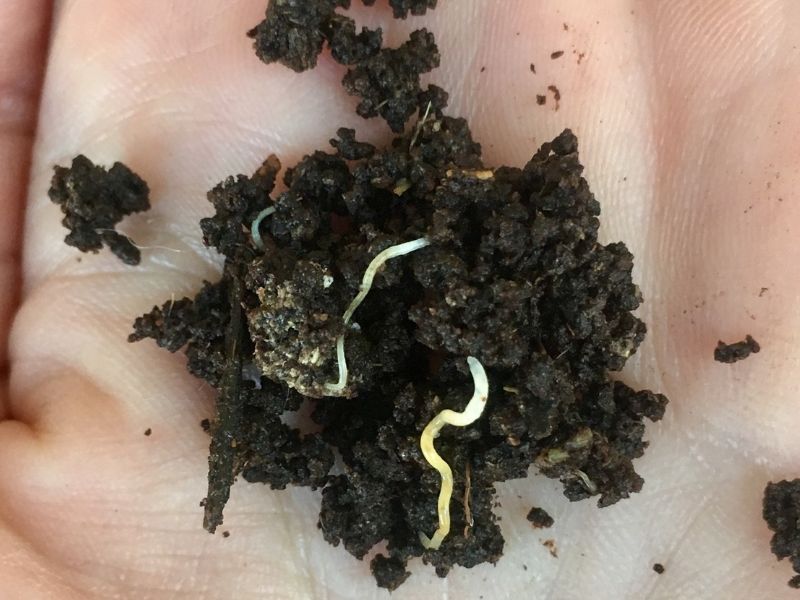From the Rotline: What are the white things in my worm bin?

Rotline Question: What are the white things in my worm bin?
Answer: Spot something unfamiliar in your worm bin? Don’t fret, you are likely to find many organisms other than worms in your worm bin! Like backyard composting, you will see a diverse, interdependent community of large and small organisms. They serve as food for each other, clean up each others’ waste, convert materials into forms that other organisms can utilize, and control each others’ populations.
So what are those tiny white things in my worm bin? Known commonly as white worms or pot worms, enchytraeids are small (one-fourth to one inch long), white, segmented worms. These creatures are often mistaken for newly hatched redworms because of their size. However, young redworms are a reddish color because of their red blood. Although related to the larger earthworms, enchytraeids do not have hemoglobin-based blood and remain white throughout their lifetime.
Some worm growers also incorrectly identify enchytraeids as “nematodes” which tend to be present in large quantities in worms bins. However, you would not likely see nematodes without a microscope. Nematodes eat decomposing plant material, but they digest only part of it; they like to share! Some commercial growers express concern that these white worms will out-compete the red worms for food and diminish their numbers. However, if your purpose in vermicomposting is to get rid of food waste then the presence of an organism that helps do the job is an asset, not a detriment. These little guys are fine!
In your worm bin, you may also see hundreds of tiny (1/16 of an inch) white creatures that “spring” away in all directions if you try to touch them. Springtails are primitive wingless insects with a pointed prong extending forward underneath their abdomen from the rear. By quickly extending this prong, their bodies “spring” forward. Springtails are not only numerous but they are diverse with over 1200 species. They feed on decaying matter and fungi, so they are also a helpful member of your bin community.
Most people shudder when they see white maggots in their worm bin or compost pile. These maggots are the larvae of “compost-dwelling” soldier flies. But don’t be grossed out! In fact, these larvae play a role in breaking down and recycling nutrients back into the soil. Soldier fly larvae are voracious consumers of nitrogen-rich decaying materials, such as kitchen food scraps and manures. Females lay eggs on the surface of the nitrogen-rich material for newly hatched young to feed. If you want to avoid having these flies and their maggots in your compost pile, make sure you have enough shredded paper and organic “brown” material in the bin to cover the nitrogen sources. In a worm bin, you should bury food scraps at least six inches down and not worry about competition between the flies and the worms; flies aren’t predators of the worms or their eggs.
